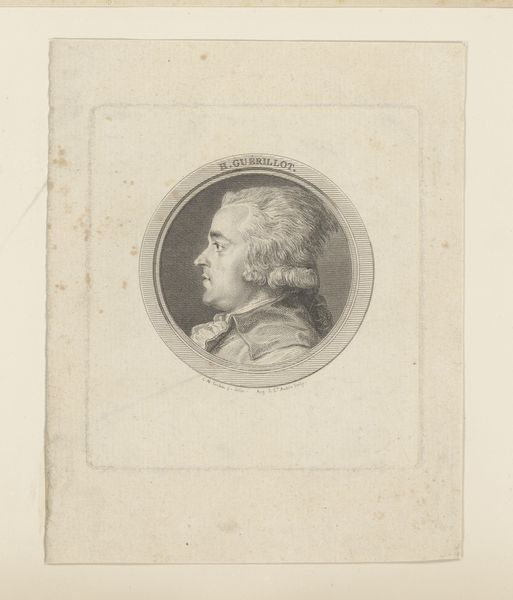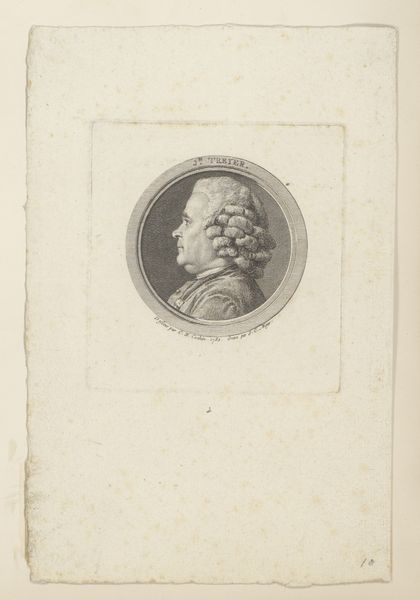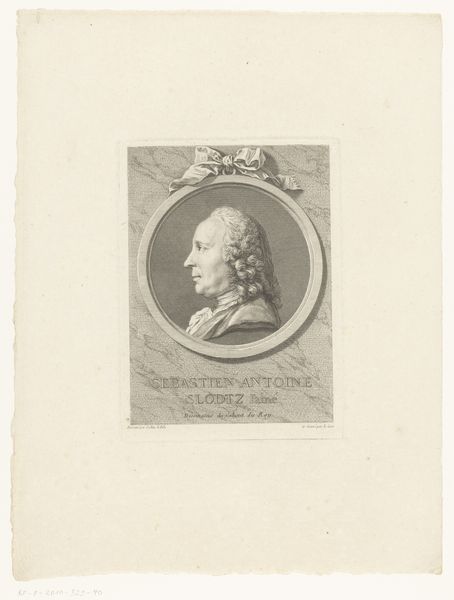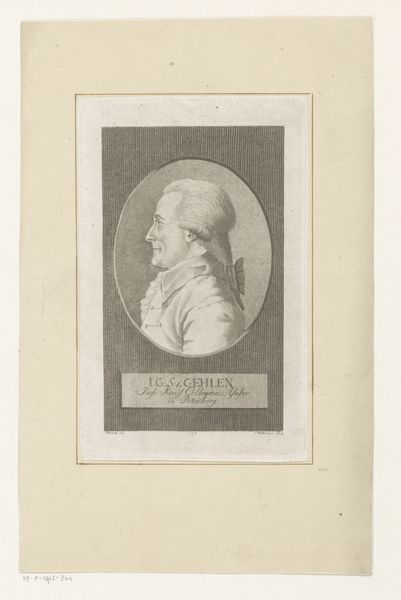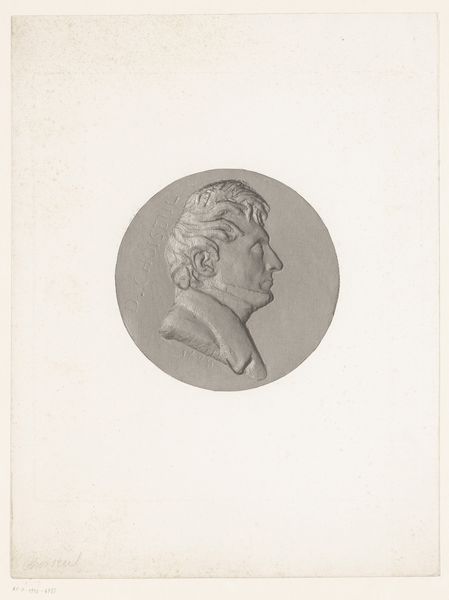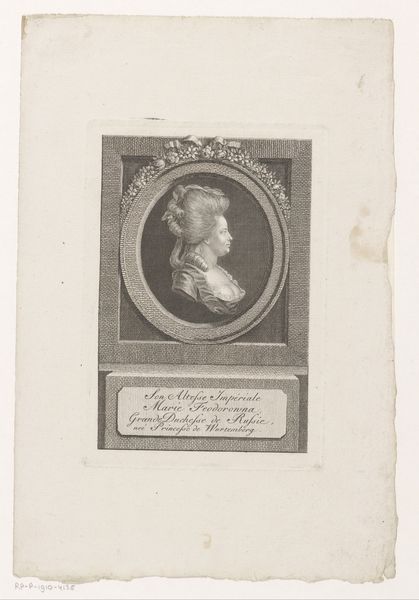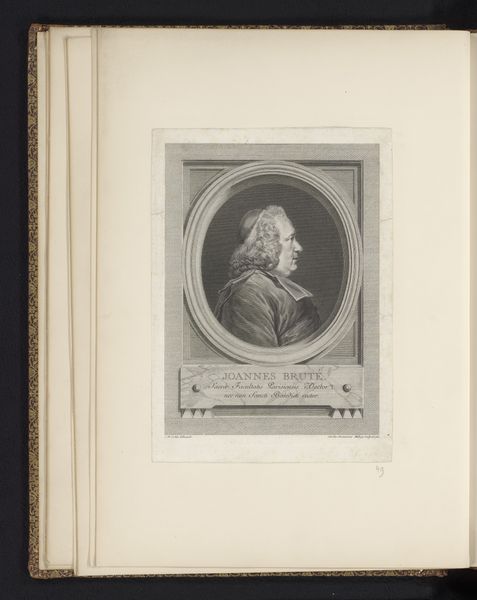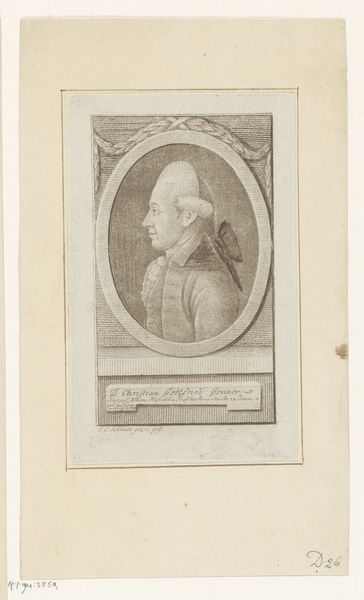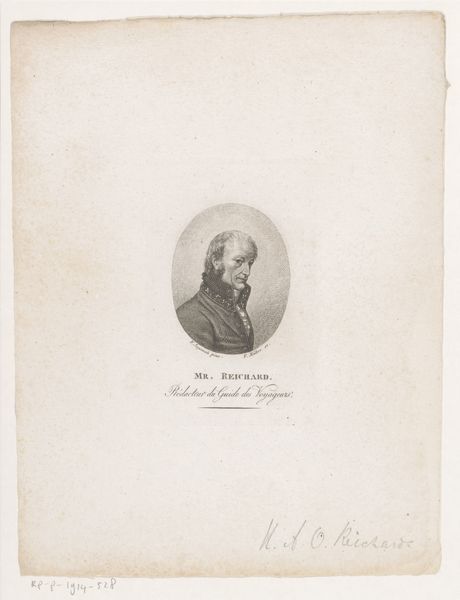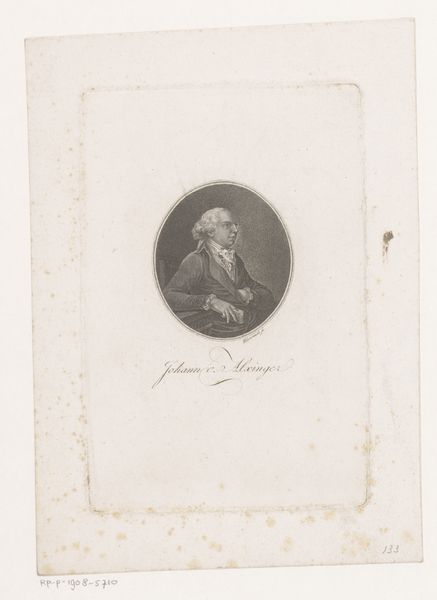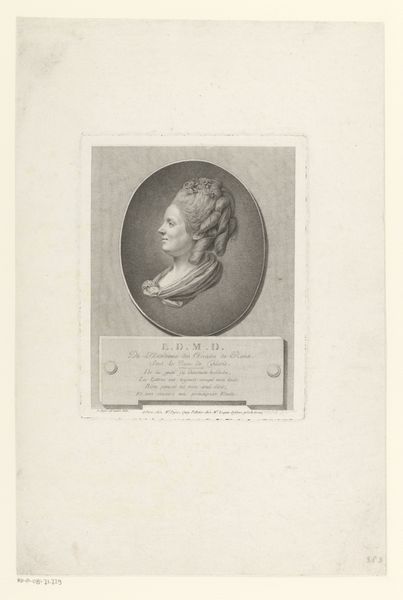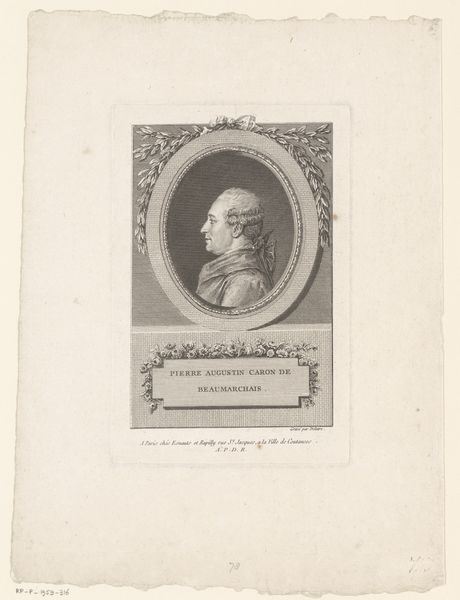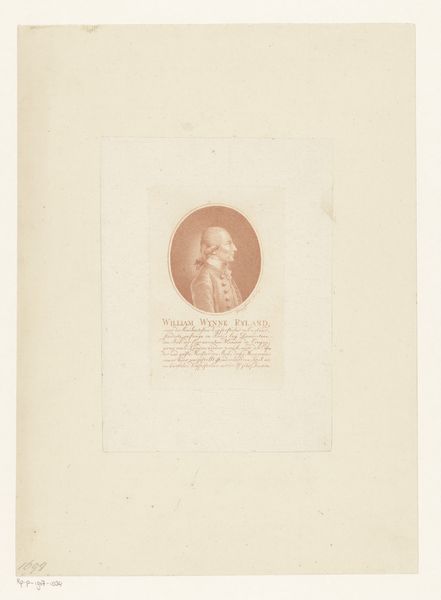
print, engraving
#
portrait
#
neoclacissism
# print
#
figuration
#
line
#
engraving
Dimensions: height 102 mm, width 94 mm
Copyright: Rijks Museum: Open Domain
Curator: Looking at this piece, I immediately get a sense of formality and perhaps a touch of melancholy. It’s striking in its simplicity. Editor: Indeed. This is a portrait of Pierre Feray, rendered in 1780 through the meticulous process of engraving by Jean-François Rousseau. It is firmly within the Neoclassical style. Curator: That classical influence is palpable, especially with the profile pose enclosed in that perfect circle. The circle itself acts as a powerful symbol. Editor: Yes, the circular frame does suggest timelessness, evoking ancient cameos and medallions. There’s a sense of elevating the subject, wouldn't you say? Yet, I wonder how Feray's own social standing intersects with this seemingly neutral depiction. Was this an image designed to project respectability in a pre-revolutionary world? Curator: An important question! The clean, spare lines certainly lend an air of rationality – typical of the era. However, the detailed rendering of his features also seems to suggest an attempt to capture something deeper than just his outward appearance. What about his eyes, what sort of impression do they convey to you? Editor: They speak of contemplation. It's difficult to ascertain depth with only a profile, but the engraving allows the gaze to linger. It suggests someone aware of themselves, perhaps a little weary. The linear details are so meticulously executed—a testament to the craftsman’s skill but I find my mind more drawn to what it does not say, or show. Curator: Absolutely. That tension between surface and depth makes it a particularly engaging piece for me. Editor: Thinking about what an image from the 18th century signifies to contemporary audiences. Does a work like this reinforce systems of representation or perhaps subvert some given its context? Curator: That question, that critical assessment is exactly what renders pieces from this historical vantage meaningful today, I concur completely. It speaks to continuity, but one viewed through an ethical lens. Editor: Ultimately, exploring these historical portraits means confronting our understanding of identity and how individuals navigated their place within history and that still affects the way we operate in this contemporary life. Curator: A fitting takeaway from such a thought-provoking work! Thank you.
Comments
No comments
Be the first to comment and join the conversation on the ultimate creative platform.
